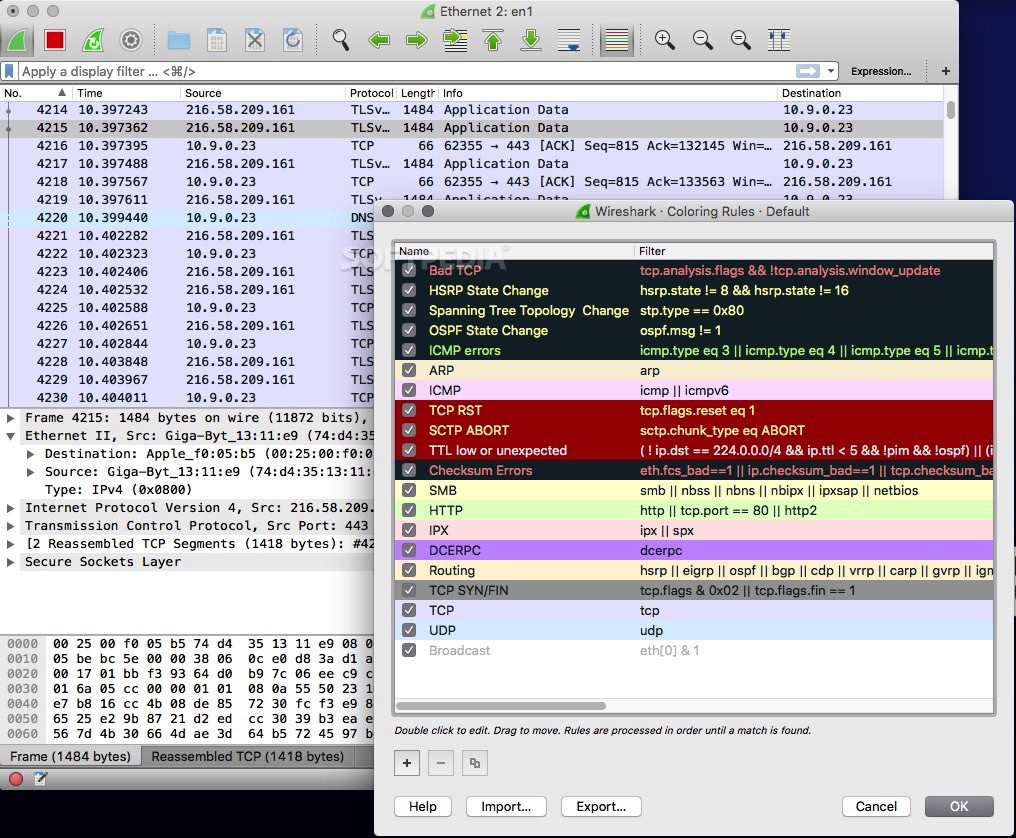Feb 26, 2021 Download Cocoa JSON Editor 1.9.3.1 for Mac from our website for free. This Mac application is an intellectual property of ArtPRO. This software works fine with Mac OS X 10.7 or later. Our antivirus analysis shows that this Mac download is clean. This application's bundle is identified as com.artproweb.cocoajsoneditor. Mac Applications filed under: cocoa (36 items) Free Trial Driver Booster 6 PRO (60% OFF when you buy) Apps filed under: cocoa. 457 downloads; 128 KB.

Cocoa Programming For Mac Os X
Complete guide to coding & programming on a Mac: Get started with iOS and macOS development Being an Apple owner, you're probably keen to develop apps for both macOS and iOS. And that means. All-new Interface. MacOS Big Sur brings a new design that’s been finely tuned for the powerful features that make a Mac a Mac. Core features, such as the menu bar and Dock, take advantage of the large Mac display, with translucent backings and spacious pull-down menus. Still the book I recommend to folks who want to learn Obj-C and Cocoa programming for MacOS X and iPhone. Flag Like see review. Dec 23, 2009 Demian Turner rated it it was amazing review of another edition. Shelves: tech, cocoa. An excellent and essential introduction to Cocoa for developers.
Here are some more books on MacOS X / Cocoa / Carbon Programming: Java: 'MacOS X Java' Wiliams, Albert, Hart, Hopkins and Steinberg, Wrox press. (Just got this one, reading it now) WebObjects 5 for Java: A Developer's Guide (With CD-ROM) by Jesse Feiler (Paperback). Get ready for macOS Big Sur. MacOS Big Sur takes the most advanced operating system in the world to a whole new level of power and beauty, making your apps look better than ever on an all-new interface. New widget features and the new widget gallery help you deliver more value to your users. Adding intelligence to your apps with machine learning is even simpler and more extensive with new.
Cocoa is possibly one of the most rewarding, fun and productive ways to program a modern computer yet devised. If you own a Mac running Mac OS X, you already have Cocoa, and all the tools needed to program your Mac are available for free from Apple. Anyone who has an interest in programming can use Cocoa to write Mac applications, yet it is not just for beginners; many of the best OS X software titles available are written using Cocoa. You are able to harness the full power of the machine from Cocoa.
Programming using Cocoa involves both using a graphical user interface (GUI -- pronounced 'gooey') tool to build your user interfaces, and an integrated development environment (IDE). Cocoa consists of hundreds of ready-built classes, which are pre-programmed modules of reusable code, that you can simply include in your own work. Since these classes are well designed, powerful and fully debugged, using them saves you hundreds of hours in building in complex functionality.
Cocoa is the name given to the complete set of classes, functions and constants, grouped together into an Application Programming Interface, or API. For building Mac applications Cocoa is the only API that is really used anymore. (The other APIs that used to be provided by Apple, the Classic API and the Carbon API have been deprecated.)
To get the most out of this text, you will need to be running Mac OS X 10.3 or later. If you have 10.2, most of what is here will work OK, but the tools as described will be different, and a little harder to use. The coding examples avoid Cocoa features that only exist on 10.3 or 10.4, but later chapters will explain them.
Significant parts of this text describe older versions of Interface Builder. Some of what is described will not work with version 3.0.
Above all, this text aims to get you started in the smoothest way possible, so that you can begin to see not just how powerful Cocoa can be, but also how much fun it is to work with.
Cocoa Mac Download Software
Home > Articles > Programming > General Programming/Other Languages
␡- Drawing with NSBezierPath

Cocoa Programming For Macos Download
This chapter is from the book Cocoa Programming
This chapter is from the book
This chapter is from the book
Drawing with NSBezierPath
If you want to draw lines, ovals, curves, or polygons, you will use NSBezierPath. In this chapter, you already used the NSBezierPath's fillRect: class method to color your view. In this section, you will use NSBezierPath to draw lines connecting random points (Figure 12.14).
Figure 12.14 Completed Application
The first thing you will need is an instance variable to hold on to the instance of NSBezierPath. You are also going to create an instance method that returns a random point in the view. Open StretchView.h and make it look like this:

Now in StretchView.m, you are going to override initWithFrame:. initWithFrame: is the designated initializer for views, and it will get called automatically when an instance of your view is created. In your version of initWithFrame:, you are going to create the path object and fill it with lines to random points. Make StretchView.m look like this:
Build and run your app.
Related Resources
Mastering Macos Programming
- Book $55.99
- eBook (Watermarked) $55.99
- Web Edition $55.99

This directory contains binaries for a base distribution and packages to run on macOS. Releases for old Mac OS X systems (through Mac OS X 10.5) and PowerPC Macs can be found in the old directory.
Cocoa Mac Download Free
Note: Although we take precautions when assembling binaries, please use the normal precautions with downloaded executables.
Package binaries for R versions older than 3.2.0 are only available from the CRAN archive so users of such versions should adjust the CRAN mirror setting (https://cran-archive.r-project.org) accordingly.
R 4.1.1 'Kick Things' released on 2021/08/10
Please check the SHA1 checksum of the downloaded image to ensure that it has not been tampered with or corrupted during the mirroring process. For example type
openssl sha1 R-4.1.1.pkg
in the Terminal application to print the SHA1 checksum for the R-4.1.1.pkg image. On Mac OS X 10.7 and later you can also validate the signature using
pkgutil --check-signature R-4.1.1.pkg
Latest release:
| R-4.1.1.pkg (notarized and signed) SHA1-hash: d0eed7d0755bc80911acb616508d41e1396f810e (ca. 86MB) | R 4.1.1 binary for macOS 10.13 (High Sierra) and higher, Intel 64-bit build, signed and notarized package. Contains R 4.1.1 framework, R.app GUI 1.77 in 64-bit for Intel Macs, Tcl/Tk 8.6.6 X11 libraries and Texinfo 6.7. The latter two components are optional and can be ommitted when choosing 'custom install', they are only needed if you want to use the tcltk R package or build package documentation from sources. Note: the use of X11 (including tcltk) requires XQuartz to be installed since it is no longer part of OS X. Always re-install XQuartz when upgrading your macOS to a new major version. This release supports Intel Macs, but it is also known to work using Rosetta2 on M1-based Macs. For native Apple silicon arm64 binary see below. Important: this release uses Xcode 12.4 and GNU Fortran 8.2. If you wish to compile R packages from sources, you may need to download GNU Fortran 8.2 - see the tools directory. |
| R-4.1.1-arm64.pkg (notarized and signed) SHA1-hash: e58f4b78f9e4d347a12cc9160ee69d3d23e69f3b (ca. 87MB) | R 4.1.1 binary for macOS 11 (Big Sur) and higher, Apple silicon arm64 build, signed and notarized package. Contains R 4.1.1 framework, R.app GUI 1.77 for Apple silicon Macs (M1 and higher), Tcl/Tk 8.6.11 X11 libraries and Texinfo 6.7. Important: this version does NOT work on older Intel-based Macs. Note: the use of X11 (including tcltk) requires XQuartz. Always re-install XQuartz when upgrading your macOS to a new major version. This release uses Xcode 12.4 and experimental GNU Fortran 11 arm64 fork. If you wish to compile R packages from sources, you may need to download GNU Fortran for arm64 from https://mac.R-project.org/libs-arm64. Any external libraries and tools are expected to live in /opt/R/arm64 to not conflict with Intel-based software and this build will not use /usr/local to avoid such conflicts. |
| NEWS (for Mac GUI) | News features and changes in the R.app Mac GUI |
| Mac-GUI-1.76.tar.gz SHA1-hash: 304980f3dab7a111534daead997b8df594c60131 | Sources for the R.app GUI 1.76 for macOS. This file is only needed if you want to join the development of the GUI (see also Mac-GUI repository), it is not intended for regular users. Read the INSTALL file for further instructions. |
Note: Previous R versions for El Capitan can be found in the el-capitan/base directory.Binaries for legacy OS X systems: | |
| R-3.6.3.nn.pkg (signed) SHA1-hash: c462c9b1f9b45d778f05b8d9aa25a9123b3557c4 (ca. 77MB) | R 3.6.3 binary for OS X 10.11 (El Capitan) and higher, signed package. Contains R 3.6.3 framework, R.app GUI 1.70 in 64-bit for Intel Macs, Tcl/Tk 8.6.6 X11 libraries and Texinfo 5.2. The latter two components are optional and can be ommitted when choosing 'custom install', they are only needed if you want to use the tcltk R package or build package documentation from sources. |
| R-3.3.3.pkg MD5-hash: 893ba010f303e666e19f86e4800f1fbf SHA1-hash: 5ae71b000b15805f95f38c08c45972d51ce3d027 (ca. 71MB) | R 3.3.3 binary for Mac OS X 10.9 (Mavericks) and higher, signed package. Contains R 3.3.3 framework, R.app GUI 1.69 in 64-bit for Intel Macs, Tcl/Tk 8.6.0 X11 libraries and Texinfo 5.2. The latter two components are optional and can be ommitted when choosing 'custom install', it is only needed if you want to use the tcltk R package or build package documentation from sources. Note: the use of X11 (including tcltk) requires XQuartz to be installed since it is no longer part of OS X. Always re-install XQuartz when upgrading your OS X to a new major version. |
| R-3.2.1-snowleopard.pkg MD5-hash: 58fe9d01314d9cb75ff80ccfb914fd65 SHA1-hash: be6e91db12bac22a324f0cb51c7efa9063ece0d0 (ca. 68MB) | R 3.2.1 legacy binary for Mac OS X 10.6 (Snow Leopard) - 10.8 (Mountain Lion), signed package. Contains R 3.2.1 framework, R.app GUI 1.66 in 64-bit for Intel Macs. This package contains the R framework, 64-bit GUI (R.app), Tcl/Tk 8.6.0 X11 libraries and Texinfop 5.2. GNU Fortran is NOT included (needed if you want to compile packages from sources that contain FORTRAN code) please see the tools directory. NOTE: the binary support for OS X before Mavericks is being phased out, we do not expect further releases! |
Subdirectories:
| tools | Additional tools necessary for building R for Mac OS X: Universal GNU Fortran compiler for Mac OS X (see R for Mac tools page for details). |
| base | Binaries of R builds for macOS 10.13 or higher (High Sierra), Intel build |
| contrib | Binaries of package builds for macOS 10.13 or higher (High Sierra), Intel build |
| big-sur-arm64 | Binaries for macOS 11 or higher (Big Sur) for arm64-based Macs (aka Apple silicon such as the M1 chip) |
| el-capitan | Binaries of package builds for OS X 10.11 or higher (El Capitan build) |
| mavericks | Binaries of package builds for Mac OS X 10.9 or higher (Mavericks build) |
| old | Previously released R versions for Mac OS X |
You may also want to read the R FAQ and R for Mac OS X FAQ. For discussion of Mac-related topics and reporting Mac-specific bugs, please use the R-SIG-Mac mailing list.
Information, tools and most recent daily builds of the R GUI, R-patched and R-devel can be found at http://mac.R-project.org/. Please visit that page especially during beta stages to help us test the macOS binaries before final release!
Package maintainers should visit CRAN check summary page to see whether their package is compatible with the current build of R for macOS.
Binary libraries for dependencies not present here are available from http://mac.R-project.org/libs and corresponding sources at http://mac.R-project.org/src.
Last modified: 2021/05/20, by Simon Urbanek